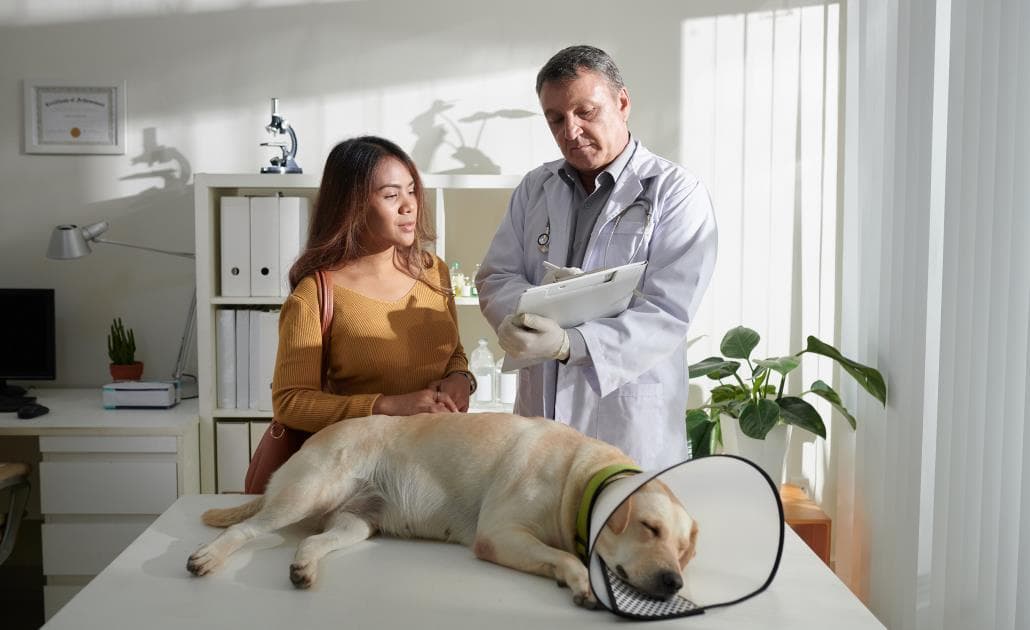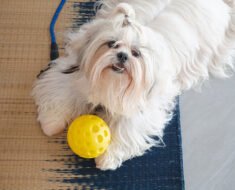If you have deliveries or maintenance visits at your home, you know how stressful it can be to keep your dog calm and out of the way. Teaching your dog a simple “Go to Crate” cue can make these moments much easier for you and safer for everyone involved.
Imagine your dog calmly heading to their crate on command, giving you peace of mind and allowing visitors to do their job without distraction. You’ll learn step-by-step how to teach this valuable skill quickly and effectively. Keep reading to discover easy tips that will transform these tricky situations into smooth, stress-free experiences for both you and your furry friend.
Benefits Of Crate Cue Training
Crate cue traininghelps keep dogs safe during visits. Dogs stay calm and relaxed. This lowers the chance of accidents or injuries. Staff can work more easily without stress.
Dogs feel less scared with crate training. They learn the crate is a safe place. This reduces anxiety during deliveries and visits. A calm dog means a smoother visit for everyone.
Staff find handling dogs simpler with crate cues. Dogs respond quickly to the command. It saves time and effort. Staff can focus on their tasks without worry.
Preparing For Crate Training
Choose a crate that fits your dog comfortably. It should be big enough to let your dog stand, turn, and lie down. Too large crates can make dogs feel unsafe. Pick a crate with good ventilation for fresh air.
Create a calm and safe space around the crate. Place the crate in a quiet room where your dog feels relaxed. Use soft bedding inside to make it cozy. Avoid putting the crate in direct sunlight or noisy areas.
| Supplies Needed | Purpose |
|---|---|
| Crate | Safe space for dog |
| Soft bedding | Comfort inside crate |
| Toys | Keep dog entertained |
| Treats | Encourage positive behavior |
Introducing The Go To Crate Cue
Start by showing your dog a tasty treat near the crate. Say the words “Go to crate”clearly and gently guide your dog inside. Give the treat as soon as your dog enters. This helps your dog connect the words with the action.
Repeat this many times so your dog understands the cue means “go inside.” Keep the sessions very short and fun, about 3 to 5 minutes each. Dogs learn best with positive rewards.
| Step | What to Do |
|---|---|
| 1 | Show treat near the crate |
| 2 | Say “Go to crate” and guide dog inside |
| 3 | Reward with treat immediately |
| 4 | Repeat short sessions often |

Credit: www.ezyvet.com
Step-by-step Training Process
Start by holding a treat near the crate entrance. Move the treat slowly inside to lure your dog. Wait patiently as your dog steps in. Praise softly once inside. Repeat until your dog goes in quickly.
Next, add a clear verbal cue like “crate” or “bed.” Say the cue just before luring the dog. Use the same word every time. This helps your dog link the cue to the action.
Give lots of positive feedback once your dog follows the cue. Use gentle petting and kind words. Treats work well too. This makes the dog feel happy and safe.
Practice the cue several times each day. Short sessions work best to keep attention. Be patient and calm. Consistency helps your dog learn faster. Soon, the dog will go to the crate on command.
Troubleshooting Common Issues
Some dogs may show reluctance to enter the crate. Try using treats or toys as a lure. Keep the crate door open and make it a safe, cozy space. Avoid forcing the dog inside to build trust.
Distractions during trainingcan slow progress. Choose a quiet place with few noises or smells. Short sessions work best. Gradually add distractions once the dog feels comfortable.
Inconsistent responseshappen if cues or rewards change often. Use the same word or signal every time. Reward the dog immediately for correct behavior. Consistency helps the dog understand what you want.

Credit: www.amazon.com
Using The Cue During Deliveries And Visits
Clear communicationwith dog owners is key for smooth visits. Explain the go to crate cuebefore arriving. Ask owners to keep the dog calm and ready. This helps avoid surprises and keeps visits safe.
Keeping a calm environmentreduces stress for dogs and visitors. Speak softly and move slowly near the dog. Avoid loud noises or sudden actions. A quiet space helps dogs respond well to the crate cue.
Different homes have different spaces and rules. Be ready to adaptyour approach. Look for quiet corners or rooms for the dog’s crate. Respect owner’s requests and the dog’s comfort. Flexibility makes visits easier and safer for all.
Maintaining And Reinforcing The Cue
Practice the go to crate cueoften to keep it strong. Short sessions each day work best. This helps your dog remember the cue easily.
Always reward your dogright after they enter the crate. Use treats, praise, or petting. Rewards make your dog want to obey the cue.
Change your training methods if your dog seems bored or confused. Try new toys, treats, or timingto keep learning fun. This keeps your dog interested and responsive.

Credit: k9basics.com
Frequently Asked Questions
How Do I Start Teaching A Crate Cue To My Dog?
Begin by introducing the crate positively. Use treats and praise when your dog approaches the crate. Gradually increase crate time to build comfort and trust.
Why Use A Crate Cue For Deliveries And Visits?
A crate cue helps keep dogs calm and safe during home deliveries or maintenance visits. It reduces stress and prevents unwanted interactions.
How Long Does It Take To Train A Crate Cue?
Training time varies by dog but usually takes one to two weeks. Consistent daily practice speeds up learning and builds reliability.
What Rewards Work Best For Crate Training?
Use high-value treats, toys, and verbal praise. Rewards should be motivating and given immediately when your dog responds correctly to the crate cue.
Conclusion
Teaching your dog the “Go to Crate” cue helps keep visits safe and smooth. Practice often with short sessions to build good habits. Use clear commands and positive rewards to encourage your dog. This simple skill makes deliveries and maintenance easier for everyone.
Stay patient and consistent. Your dog will learn quickly and respond well. Safe visits start with good training.





